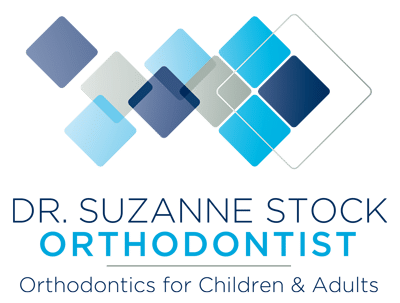Many children will need some orthodontic treatment in their lifetime, typically between the ages of 10 and 15. Many adults are choosing to get orthodontic treatment either because they never had it when they were younger or because they wish to correct relapses from previous treatment.
The most common types of orthodontic treatment are metal braces, clear braces, and clear aligners. They are similar in the fact that they straighten your teeth and align your bite. What makes them different? Here’s a comparison to help you determine which option would be best for you.
What Are Braces?
Braces consist of metal brackets that attach to the front side of each tooth. The brackets are connected by an archwire, a thin metal wire that extends from the back tooth on one side of your top or bottom row of teeth to the other side. The archwire pushes and pulls the brackets to adjust your teeth, moving them forward and backward to be in proper alignment. There are other pieces that may be used with metal braces, including springs, chains, rubber bands, and more.
What Are Clear Aligners?
Clear aligners are trays made of plastic that fit over your teeth. The aligners come in a set, each slightly different from the last. You wear each aligner for about 2 weeks at a time, then switch to the next in order to gradually shift your teeth into proper alignment. They are clear, comfortable, and removable for eating and dental hygiene.
What Are Clear Braces?
Clear braces, also known as clear brackets, are like metal braces but they are made of clear ceramic. They work the same way as metal brackets, with an archwire connecting the brackets that adjusts the position of the teeth. The main difference is that clear brackets blend in with the natural color of your teeth to be more discreet.
What Are The Key Differences?
The most obvious and most important differences between braces and clear aligners are:
- Visibility. Clear aligners are the least visible orthodontic treatment option, with clear braces being a close second. Metal braces are visible, but the brackets are smaller than they used to be.
- Fixed vs. removable. Metal and clear braces are fixed to the teeth, whereas clear aligners are removable. There are advantages and disadvantages to both. With braces you don’t have to remember to wear them and there is no risk of losing them, but there are eating restrictions and more complicated dental hygiene. Clear aligners are removable for eating and dental hygiene, but they can be easily lost or forgotten.
- Comfort. Clear aligners are made of smooth, flexible plastic that tends to be more comfortable than metal or ceramic brackets. Brackets are often rough at first, causing irritation of the soft tissues inside the cheeks and lips, but it typically subsides as your mouth gets used to braces.
- Capabilities. There are some orthodontic conditions that clear aligners can’t treat. Depending on the extent of the orthodontic corrections you need, you may or may not be a candidate for clear aligners.
Which Treatment Is Best For Me?
To determine which orthodontic treatment would be best for you, the first step is to have an orthodontic evaluation with Dr. Stock. After assessing the current position of your teeth, Dr. Stock can give you an overview of the types of treatments available to you and what would be best for your needs.
How Do I Get Started With Orthodontic Treatment?
Dr. Suzanne Stock is a board certified orthodontist providing a wide range of orthodontic services including metal braces, clear braces, and clear aligners. If you or your child is in need of an orthodontic evaluation (around age 7 for children), Dr. Stock provides complimentary consultations.
Contact us today to learn more and schedule an appointment.

